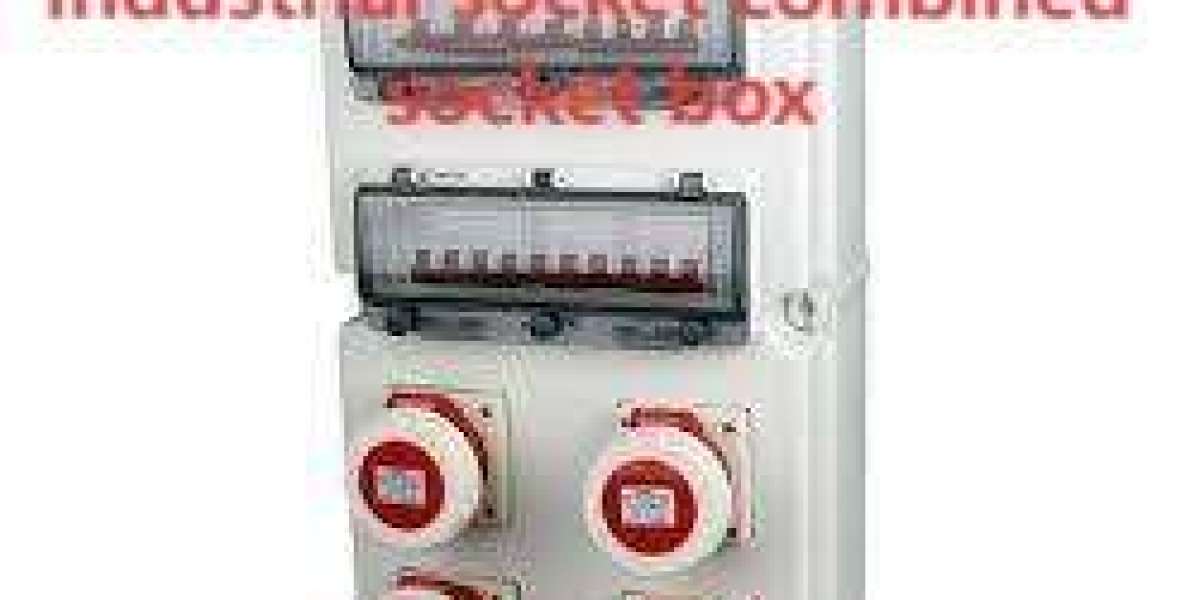Specifying the right enclosure at the design stage avoids expensive field changes later, which is why a well-chosen Electrical Socket Box dramatically improves installation reliability and serviceability. In many facilities, installing a properly rated Electrical Socket Box in the correct location reduces moisture and dust ingress, streamlines maintenance, and simplifies future upgrades. This article outlines practical selection criteria, installation best practices, and maintenance planning that help engineers, contractors, and facility managers achieve safer, longer-lasting socket installations.
Understanding Site Requirements and Use Cases
Begin with a thorough site survey that documents environmental stressors and operational needs. Note salt-laden air, washdown procedures, temperature swings, and the possibility of mechanical impact from carts or vehicles. Understand electrical demands: continuous loads, motor inrush, peak currents, and whether the socket will power sensitive control equipment. Also record how often the connector will be operated—high-cycle points need more robust contact systems. Mapping cable routes and future expansion zones early prevents undersized enclosures and avoids intrusive retrofits later.
Materials, Finishes, and Corrosion Strategies
Material choice directly influences lifetime costs. Stainless steel, powder-coated aluminum, and UV-stabilized engineering polymers each have trade-offs in weight, thermal behavior, and corrosion resistance. Select fasteners and hinges that match the enclosure’s corrosion profile to avoid galvanic attack. High-quality surface finishes—epoxy primers or durable powder coatings—extend service life in aggressive atmospheres. Where chemical exposure or coastal conditions exist, specify corrosion-resilient alloys and test-proven coatings. These upfront choices reduce maintenance frequency and preserve safety margins over years of service.
Sealing, Cable Entry, and Gland Best Practices
Ingress protection depends on assembly-level practices as much as enclosure design. Use continuous molded gaskets and gasket retention channels to ensure consistent compression across panel openings. Choose cable glands sized to match conductor insulation and armor; undersized glands are a common cause of later ingress. Factory-supplied gland plates and approved accessory kits maintain rated protection during wiring. During commissioning, verify seals and glands under as-installed conditions rather than relying solely on empty-box lab data. Proper gland selection and installation preserve long-term performance.
Thermal Management and Internal Layout Considerations
Heat is a silent stressor. Lay out internal components to separate heat-producing devices from sensitive electronics and allow natural convection paths. Use conductive mounting plates or backplanes to spread heat where passive cooling suffices. For higher dissipations, integrate filtered fans or compact air-to-air exchangers that maintain rated protection. Enforce correct conductor sizing and calibrated terminal torque to minimize resistive heating. Perform thermal imaging during commissioning to spot hotspots and validate layout choices before the system goes into full service.
Contact Technology, Cycle Life, and Replaceability
The interface itself determines service life. Contact metallurgy, plating, and mechanical design affect contact resistance, wear, and corrosion tolerance. For frequent-use sockets choose multi-finger or spring-loaded contacts with low insertion force and replaceable contact modules. Replaceability extends the service life of the whole assembly and lowers lifecycle cost compared with disposable units. Consider keyed couplings or locking collars to prevent mis-mating in mixed-voltage areas and improve operator safety.
Installer-Focused Features That Reduce Field Risk
Choose products with installer-friendly details to reduce on-site errors: removable gland plates, captive screws, pre-marked mounting templates, and tool-free latches all speed commissioning and protect seals. Provide installers with CAD files, torque specifications, and clear wiring zone labeling to avoid improvisation that compromises ratings. Protect open enclosures during construction and record as-built penetration locations so future teams understand the original configuration and maintain ingress integrity during upgrades.
Testing, Commissioning, and Preventive Maintenance
Commissioning should validate both electrical and environmental performance. Run continuity and insulation-resistance checks, then perform a thermal run under expected load to confirm temperature rise is within limits. Use thermography to reveal loose terminations before failures occur. Establish a maintenance cadence that includes gasket checks, fastener torque verification, and visual inspections after severe weather or washdowns. Keep a small spares kit—replacement gaskets, gland inserts, and spare contact modules—to shorten repair time when issues arise.
Procurement, Standardization, and Total Cost of Ownership
Evaluate suppliers beyond unit price: require third-party IP/NEMA test reports for representative, wired assemblies, confirm spare-part availability, and check warranty terms. Standardize across site zones on families of enclosures that share accessories to reduce spare-part inventory complexity. Investing slightly more for serviceable, well-documented designs often lowers total cost through reduced emergency repairs and extended replacement cycles. Prioritize vendors that provide installation checklists and responsive technical support.
Human Factors, Safety, and Placement Strategies — Nante Product Highlights
Place sockets at ergonomic heights and away from vehicle aisles to ease inspection and reduce accidental damage. Where public access exists, use tamper-resistant hardware and clear external labeling. Incorporate lockout/tagout procedures and redundant feeds for critical loads so maintenance can proceed without operational interruption. Nante’s installer-focused families include accessory options and replacement modules that simplify upgrades and preserve system integrity.
A well-specified and properly installed socket assembly minimizes downtime, increases safety, and reduces lifecycle expense. By matching materials to environment, enforcing gland and torque best practices, and standardizing on serviceable designs, teams create robust power interfaces that support evolving facility needs. For product details, accessory options, and technical resources, visit www.nante.com








